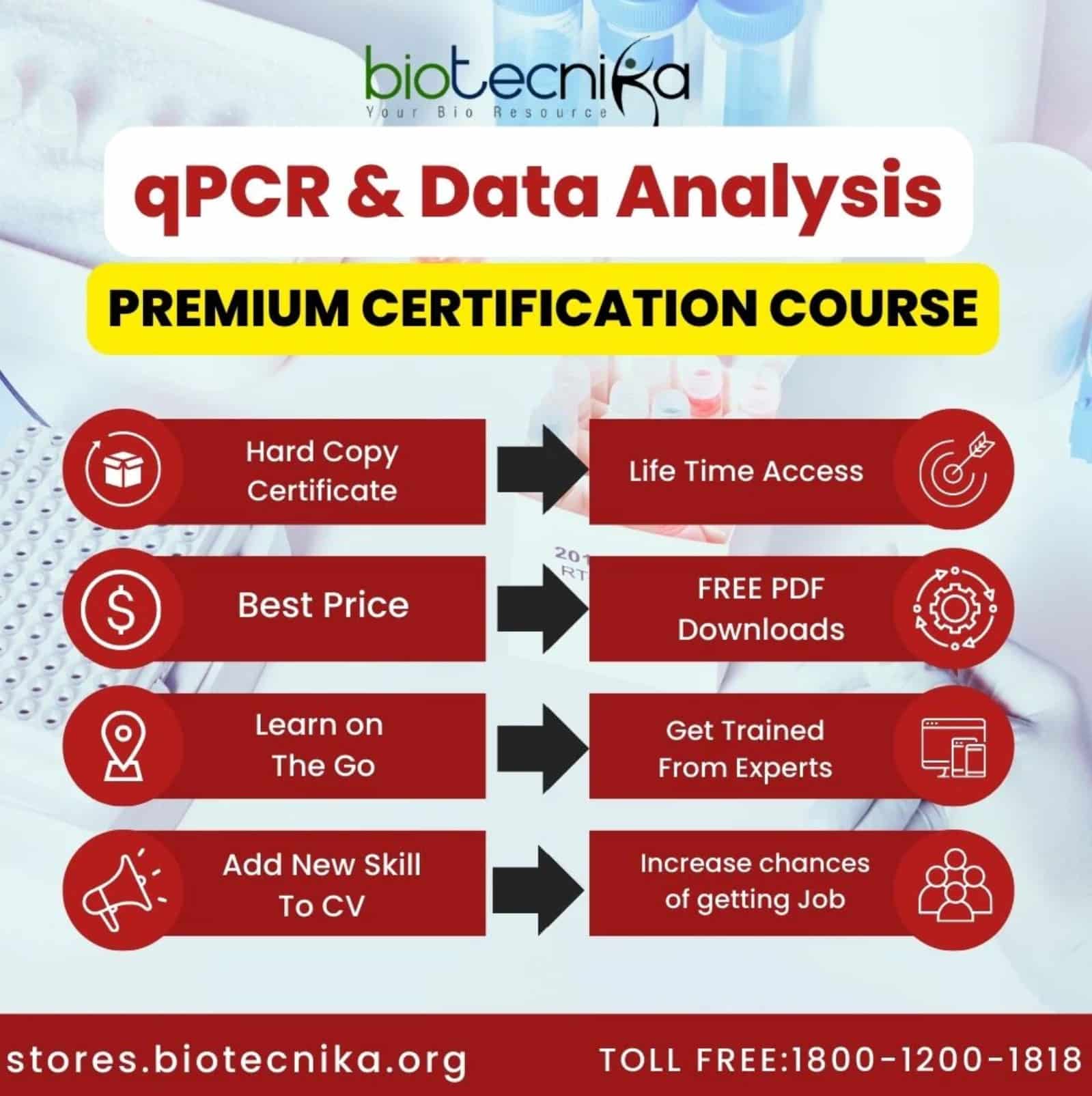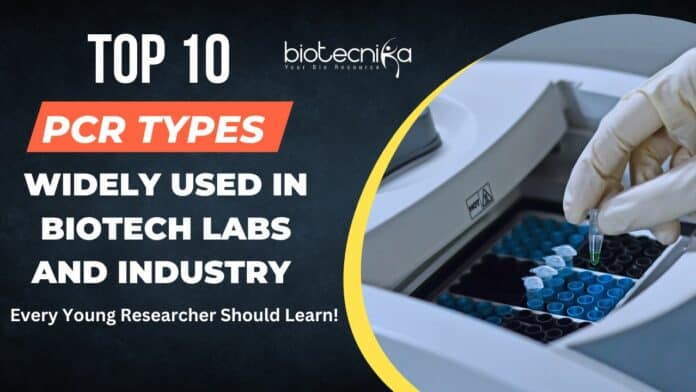Top 10 PCR Types Every Young Researcher Should Learn!
Polymerase chain reaction (PCR) is a molecular biology technique that has revolutionized the field of genetics, enabling scientists to detect and analyze even small amounts of DNA samples. PCR amplifies a specific DNA sequence, making it possible to study genetic mutations, gene expression, and DNA sequences. Over the years, various PCR techniques have been developed that are widely used in biotech labs and industries.
Here are the top 10 essential PCR types used in biotech labs and industry:
- PCR: PCR is the most basic PCR technique used in research and diagnostics, including genotyping, cloning, and sequencing. PCR amplifies a specific DNA sequence, making it possible to study genetic mutations, gene expression, and DNA sequences.
- qPCR: Quantitative PCR (qPCR) is a more advanced version of PCR that measures the amount of amplification product in real-time during the PCR reaction. qPCR allows for the accurate and precise quantification of gene expression levels, viral load, and mutation detection. qPCR is widely used in research, drug development, and diagnostics.
- Digital PCR: Digital PCR (dPCR) is a highly sensitive and precise technique that provides absolute quantification of nucleic acids. dPCR partitions the sample into thousands of droplets, each containing a single DNA molecule. dPCR is useful in applications such as cancer diagnosis, detection of infectious diseases, and prenatal diagnosis.
- Nested PCR: Nested PCR is a modification of the traditional PCR technique that improves accuracy and reduces non-specific amplification in detecting rare mutations and quantifying nucleic acid. Nested PCR can detect rare mutations and quantify nucleic acid with greater accuracy while minimizing non-specific amplification.
- Multiplex PCR: Multiplex PCR is a technique used to simultaneously amplify multiple targets in a single reaction. Multiplex PCR is useful in applications such as pathogen detection, genotyping, and mutation detection.
- Inverse PCR: Inverse PCR is a technique used to amplify DNA fragments with known flanking sequences. Inverse PCR is useful in the study of unknown DNA sequences, genome mapping, and identification of gene regulatory elements.
- Long-range PCR: Long-range PCR is a technique used to amplify fragments up to 40 KB in size. Long-range PCR is useful in applications such as cloning, sequencing, and genome analysis.
- Allele-specific PCR: Allele-specific PCR is a technique used to detect specific alleles or mutations. Allele-specific PCR is useful in applications such as genotyping, mutation detection, and disease diagnosis.
- Real-time PCR: Real-time PCR is a variation of PCR that allows for the quantification of gene expression. Real-time PCR measures the amount of amplification product in real-time during the PCR reaction, allowing for accurate and precise quantification of gene expression levels.
- Reverse transcriptase PCR: Reverse transcriptase PCR (RT-PCR) is a technique used to amplify RNA. RT-PCR is used in gene expression analysis, detection of viral infections, and diagnosis of genetic disorders caused by RNA mutations.
Young researchers must learn these PCR techniques to stay competitive in their fields. 
qPCR and Data Analysis Premium Certification Course
Moreover, knowledge of these PCR techniques can help young researchers design and execute experiments more efficiently and effectively. Understanding the differences and advantages of each PCR technique can help researchers choose the most appropriate technique for their research question. For example, if the research question involves quantifying the expression of a specific gene, then qPCR may be the most appropriate technique. However, if the research question involves detecting rare genetic mutations, then nested PCR may be the best technique.
Furthermore, the ability to use multiple PCR techniques, PCR Types can make a young researcher more versatile and adaptable. It can increase their employment prospects and enable them to work on different projects in various fields of molecular biology. By being proficient in multiple PCR techniques, young researchers can demonstrate their expertise in molecular biology, which can lead to exciting career opportunities.







































where to register